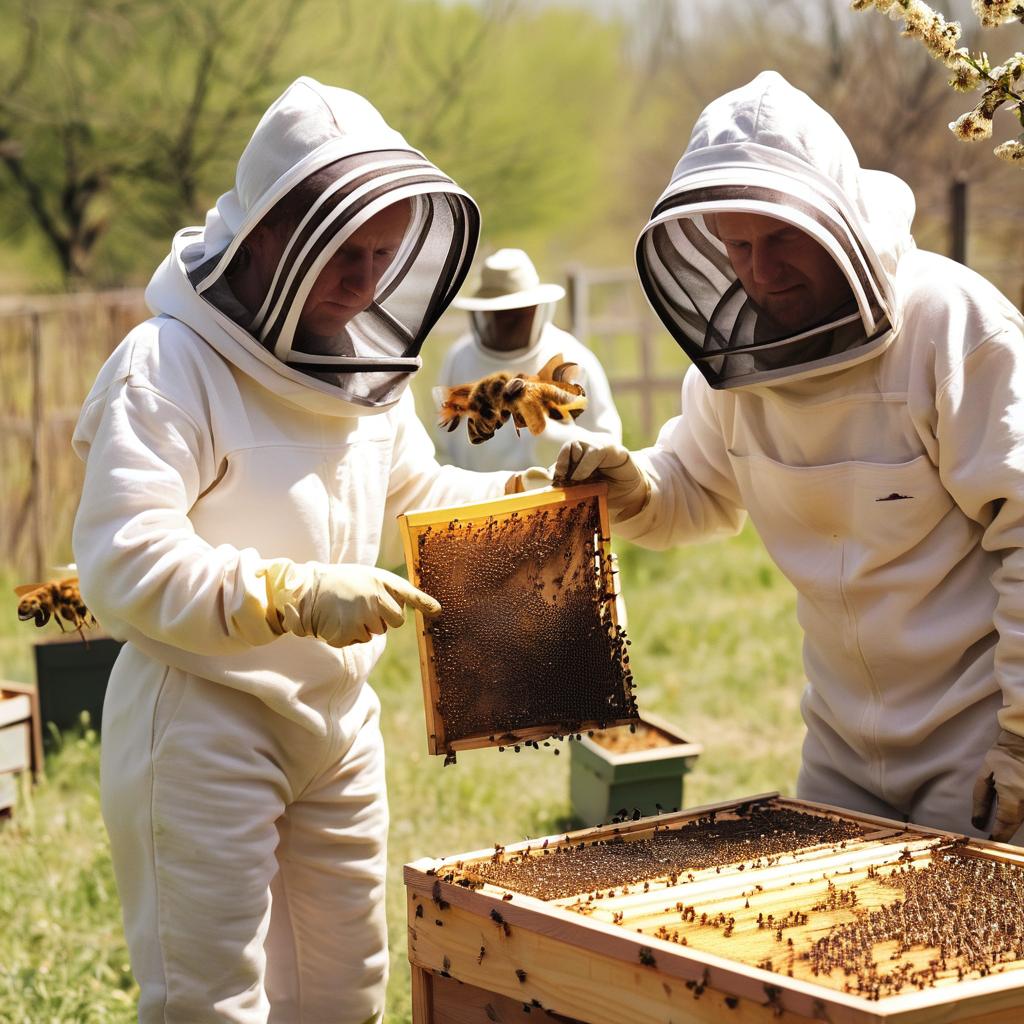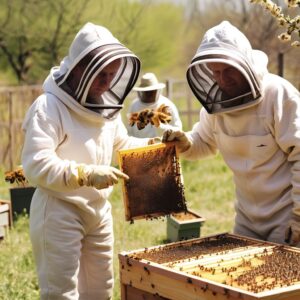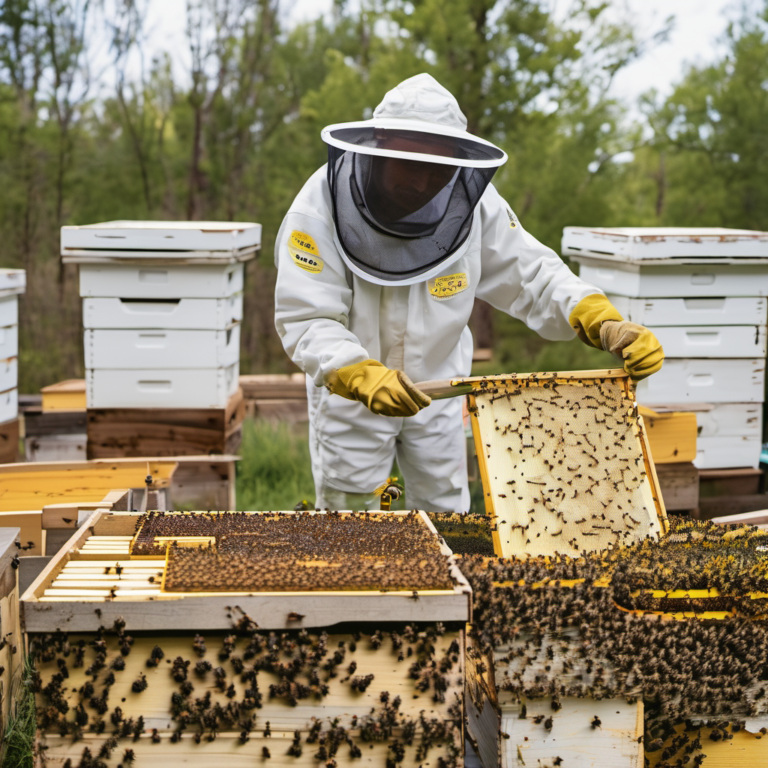Earnings of USA Bee Keepers
The earnings of beekeepers in the USA can vary significantly based on experience, location, and the scale of their operations. On average, a beekeeper in the United States earns around $50,508 per year, which equates to about $24.28 per hour (ZipRecruiter) (PayScale). However, this figure can range widely.
Key Factors Influencing Beekeeper Earnings
Experience and Skill Level: Beekeepers with several years of experience tend to earn more. For instance, mid-career beekeepers can earn around $65,000 annually, while those just starting might earn closer to $41,905 per year (PayScale).
Location: Geographic location plays a significant role in determining earnings. For example, beekeepers in states like California and Washington often earn above the national average due to higher demand for pollination services and local market conditions. In cities like San Mateo, CA, the average salary can be as high as $62,903 per year (Wise Beekeeping).
Scale of Operation: The number of hives managed also affects income. Full-time beekeepers managing large operations (500-800 colonies) tend to earn more than hobbyist or part-time beekeepers. Additionally, large operations may hire seasonal workers, which can influence overall earnings and costs.
Additional Income Opportunities
Beekeepers can enhance their income through various channels:
- Selling Honey and Beeswax: Retailing honey and beeswax products can significantly boost income. Retail prices for honey range from $8.50 to $10.50 per pound, and beeswax can sell for around $10.95 per pound.
- Pollination Services: Providing pollination services to farmers can be a lucrative side business.
- Diversification: Producing and selling bee-related products like bee pollen, propolis, and royal jelly can add revenue streams.
- Educational Programs and Tours: Some beekeepers offer workshops, tours, and educational programs, which can provide additional income.
Challenges
Despite the potential for good earnings, beekeeping can be challenging. Factors like hive health, regional nectar sources, and market demand for bee products can all impact profitability. New beekeepers may need several seasons to become profitable, and costs for maintaining healthy hives can be significant (Wise Beekeeping).
In summary, while the average earnings for beekeepers in the USA are around $50,508 per year, this can vary widely based on several factors. Beekeepers who diversify their products and services and manage their operations effectively can potentially earn more and build a sustainable business.
Problems of Bee Keepers In USA
Beekeeping in the USA faces several significant challenges that impact both small-scale hobbyists and large commercial operations. Here are the main problems beekeepers encounter:
1. Colony Collapse Disorder (CCD)
- Issue: CCD is a phenomenon where the majority of worker bees in a colony disappear, leaving behind the queen, food, and a few nurse bees. This leads to the collapse of the hive.
- Impact: It has caused substantial losses in bee populations, affecting honey production and pollination services.
- Solution Attempts: Research into the causes of CCD, improved management practices, and better tracking of bee health have been some responses (Wise Beekeeping) (PayScale).
2. Pesticide Exposure
- Issue: Pesticides, especially neonicotinoids, have been linked to bee deaths and weakened hives.
- Impact: Pesticides can kill bees directly or have sub-lethal effects that impair their ability to forage, navigate, and reproduce.
- Solution Attempts: Advocacy for stricter pesticide regulations, promoting integrated pest management (IPM) practices, and creating pesticide-free foraging zones (Wise Beekeeping).
3. Varroa Mite Infestation
- Issue: Varroa destructor mites are external parasites that feed on bees and spread viruses.
- Impact: Infestations can decimate colonies if not properly managed.
- Solution Attempts: Regular monitoring and treatment of hives, breeding mite-resistant bee strains, and using biological control methods (Wise Beekeeping) (PayScale).
4. Habitat Loss
- Issue: Urbanization, agriculture, and monoculture crops reduce the availability of diverse forage for bees.
- Impact: Limited forage can lead to poor nutrition, weakened immune systems, and lower reproductive success.
- Solution Attempts: Planting wildflowers, promoting urban beekeeping, and establishing conservation areas (Wise Beekeeping) (PayScale).
5. Climate Change
- Issue: Changes in weather patterns affect flowering times and the availability of nectar and pollen.
- Impact: Unpredictable weather can disrupt bee foraging patterns and reduce honey production.
- Solution Attempts: Adaptation strategies such as selecting resilient bee strains and adjusting beekeeping practices to changing conditions (Wise Beekeeping).
6. Economic Pressures
- Issue: Fluctuating honey prices, high costs of equipment, and competition from imported honey.
- Impact: Many beekeepers struggle to maintain profitability.
- Solution Attempts: Diversifying income sources through value-added products, securing contracts for pollination services, and advocating for fair trade policies (Wise Beekeeping).
7. Regulatory Challenges
- Issue: Beekeepers often face complex regulations related to hive management, honey production, and transportation.
- Impact: Navigating these regulations can be time-consuming and costly.
- Solution Attempts: Lobbying for beekeeper-friendly policies and providing educational resources to help beekeepers comply with regulations (Wise Beekeeping).
Conclusion
Addressing these challenges requires a multifaceted approach involving research, policy changes, and community engagement. By improving hive management practices, advocating for better environmental policies, and supporting beekeepers through education and resources, the beekeeping industry can work towards sustainability and resilience.
For further reading and detailed information, please refer to sources such as Wise Beekeeping, ZipRecruiter, and PayScale


